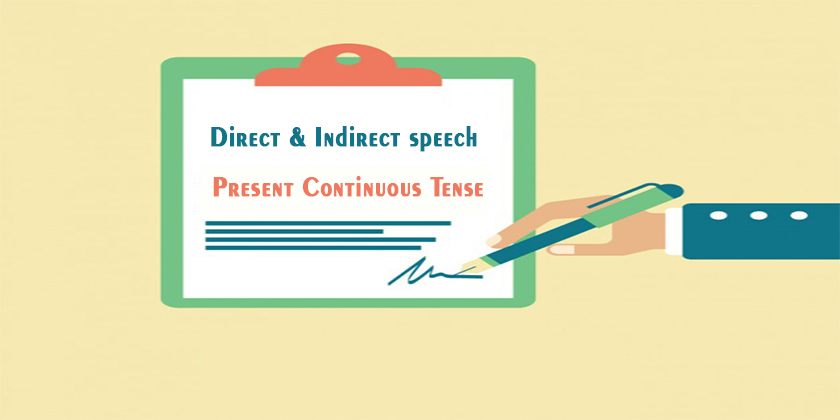
Learn how to convey a message what someone is saying, feeling or thinking in present continuous tense. Direct and indirect of present continuous tense rules and structures of affirmative, negative, interrogative and negative interrogative sentences along with examples.
For direct and indirect speech complete rules click: Direct and indirect speech complete rules
Direct and Indirect of Present Continuous Tense
Tense Change
As a rule when you report something someone has said you go back a tense, therefore, when we report what someone is saying in present continuous we go one tense back. Instead we use past continuous tense in reported speech.
Affirmatives
- Direct speech: RP +, + S + be1 + V1ing + ROTS
He said, “I am doing my homework.” - Indirect speech: RP + that + S + be2 + V1ing + ROTS
He told me that he was doing his homework.
Interrogatives
- Direct speech: RP +, + be1 + S + V1ing + ROTS
He asked, “Are you going to school?” - Indirect speech: RP + if + S + be2 + V1ing + ROTS
He asked me if I was coming/going to school.
Negatives
- Direct speech: RP +, + S + be1 not + V1ing + ROTS
He said, “She is not listening to me.” - Indirect speech: RP + that + S + be2 not + V1ing + ROTS
He said to me that she was not listening to him.
Negative interrogatives
- Direct speech: RP +, + b2 not + S + V1ing + ROTS
He asked, “Aren`t they staying with us for tonight?” - Indirect speech: RP + that + if + S + be2 not + V1ing + ROTS
He asked if they weren`t staying with them for that night.
WH/Information questions
- Direct speech: RP +, + WH + be1 + S + V1ing + ROTS
She asked, “What are you buying tomorrow?” - Indirect speech: RP + that + WH + S + be2 + V1ing + ROTS
She wanted to know what I was buying the next day.
More sentences:
Affirmative
- Direct speech: He said,” They are playing football.”
- Indirect speech: He said that they were playing football.
Interrogative
- Direct speech: He asked, “Are they playing football?”
- Indirect speech: He asked me if they were playing football.
Negative
- Direct speech: He said, “They are not playing football.”
- Indirect speech: He said that they were not playing football.
Negative interrogative
- Direct speech: He asked,” Aren’t they playing football?”
- Indirect speech: He asked me if they weren’t playing football.
Wh/ Information question
- Direct speech: He asked,” Where are they playing now?”
- Indirect speech: He wanted to know where they are playing now.
Check out Direct and Indirect Speech Exercises With Answers
If you would like to know more about direct or quoted speech, or indirect or reported speech, check out more in the book below.

2 comments
I really like this website please send me your topic in email
Hello Sudais Khattak,
Please subscribe and then you will receive all updates through your email address.